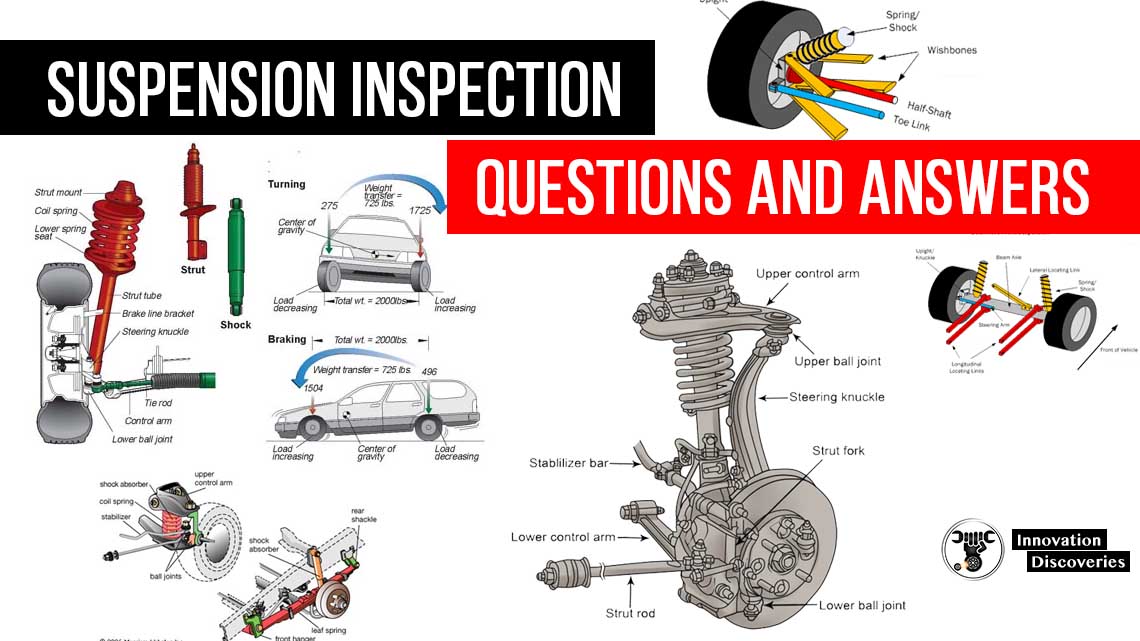
What is a vehicle suspension inspection?
Your vehicle’s suspension has many jobs, but its main task is to keep your vehicle’s tires in contact with the road.
Since no road is perfectly flat, or straight for that matter, your vehicle’s suspension keeps your tires in contact with the road, whether you are going over bumps, hitting potholes, or steering around a large turn.
Read More:
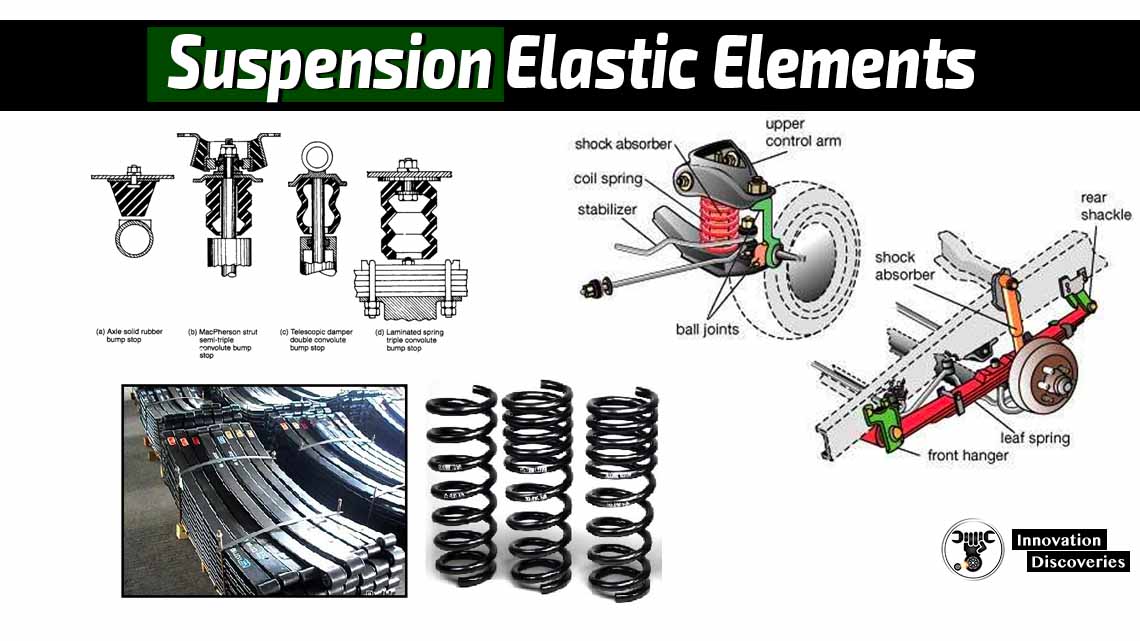
A suspension system consists of three main parts: springs, dampers, and sway bars. Springs are used to absorbing the movement and shock of your tires.
Read: ALL ABOUT VEHICLE SWAY BAR
There are four main types of springs: coil springs, leaf springs, torsion bars, and air springs.
Coil springs are the most common type of springs.
They work just like the spring in an ink pen; they compress and expand when a tire hits an uneven surface.
Next are the dampers.
Also, read:
- HOW CAR SPRINGS AND DAMPERS WORK
- HOW AIR SUSPENSION SYSTEMS WORK
- 5 SUSPENSION MODS YOU SHOULD NEVER DO TO YOUR CAR
There are two different dampening devices used in vehicles: shock absorbers and struts.
A shock absorber is designed to absorb or dampen the compression and rebound of the springs and suspension.
They control the unwanted and excess spring motion.
Shock absorbers keep your tires in contact with the road at all times.
Struts are a little bit different. They contain both a coil spring and a damper (shock absorber).
They also contain spring seats, a strut bearing, and a steering knuckle.
Read More:
- A QUICK GUIDE TO DIAGNOSING 10 COMMON STEERING ISSUES
- 5 WARNING SIGNS OF BAD INTERMEDIATE STEERING SHAFTS
- 3 COMMON SYMPTOMS OF LOW POWER STEERING FLUID
- ELECTRIC VS HYDRAULIC POWER STEERING
- HOW POWER STEERING WORKS?
- STEERING SYSTEM: REQUIREMENTS, TYPES, POWER STEER
Struts have two main jobs: first, they support the vehicle’s weight and provide structural support, and second, they dampen the spring’s movement as it reacts to the road surface.
Struts provide structural support by connecting the upper strut bearing to the lower ball joint.
This allows the strut to move as the tire is turned.
The last main part of your vehicle’s suspension is the sway bars (also called anti-sway bars or stabilizer bars).
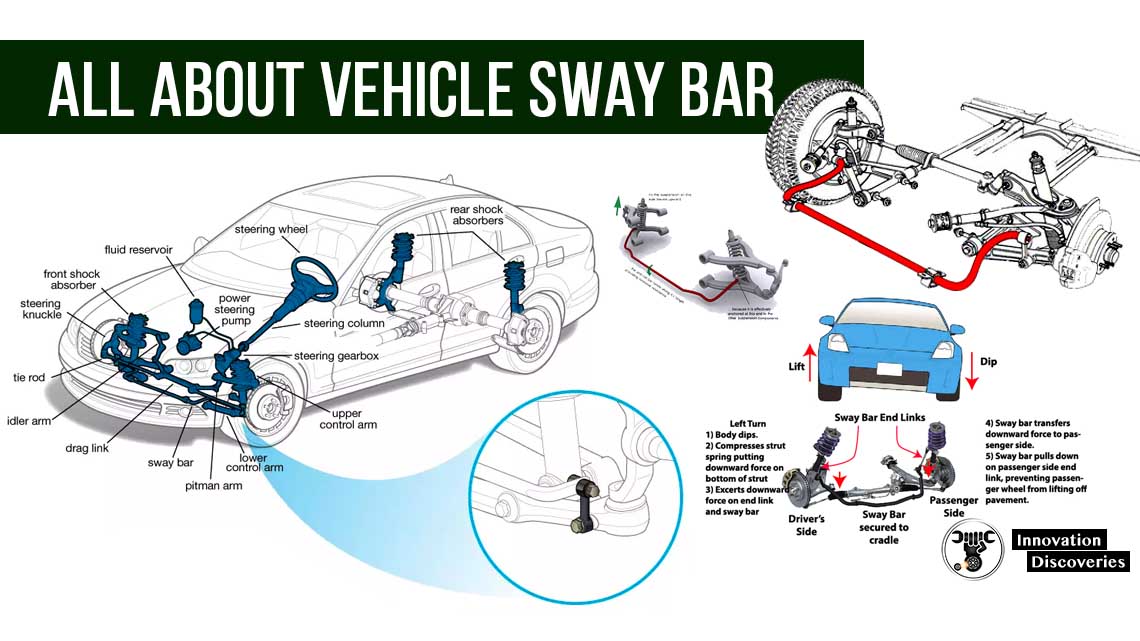
Sway bars are used to keep your vehicle from rolling over.
It is a U-shaped steel bar that is connected to each of the vehicle’s front wheels.
When your vehicle goes around a turn, your vehicle’s body rolls to one side or its weight shifts to one side.
When this happens, your vehicle is experiencing “body roll” or “sway.”
The sway bar will control each wheel’s suspension to even out your vehicle’s body roll and keep your vehicle more level.
During a suspension inspection, these main parts are examined to determine their condition and to make sure they are working properly and are safe for driving.
Why should you have your vehicle’s suspension inspected?
Your suspension system is a key safety device for your vehicle. It keeps your vehicle’s tires in contact with the road and keeps you in control of your vehicle.
Your suspension system is also a major component of providing a comfortable ride.
Many things could go wrong if your vehicle’s suspension system failed.
If your springs failed, it would be impossible for your tires to stay in contact with the road surface at all times.
Read: GEAR RATIO AND TIRE SIZE CHART
If your dampers failed, your tires would continue to bounce up and down since there wouldn’t be anything to absorb the excess spring motion.
Worn shocks and shock absorbers also affect your braking and cornering.
Worn shocks increase the distance it takes for a vehicle to stop since a tire isn’t kept in complete contact with the road.

It may also cause the front end of your vehicle to “dive” when braking. Worn shock absorbers also increase the wear on tires and suspensions.
If your vehicle’s sway bar failed, your vehicle is more susceptible to rolling over. Sway bars control your vehicle’s body roll.
Body roll is bad since your vehicle loses traction from the vehicle’s weight transferring to one side during a turn.
Sway bars keep your inside wheels in contact with the road surface during a turn, and if the sway bar failed, the inside tires can lift off the road, and you can lose control of your vehicle.
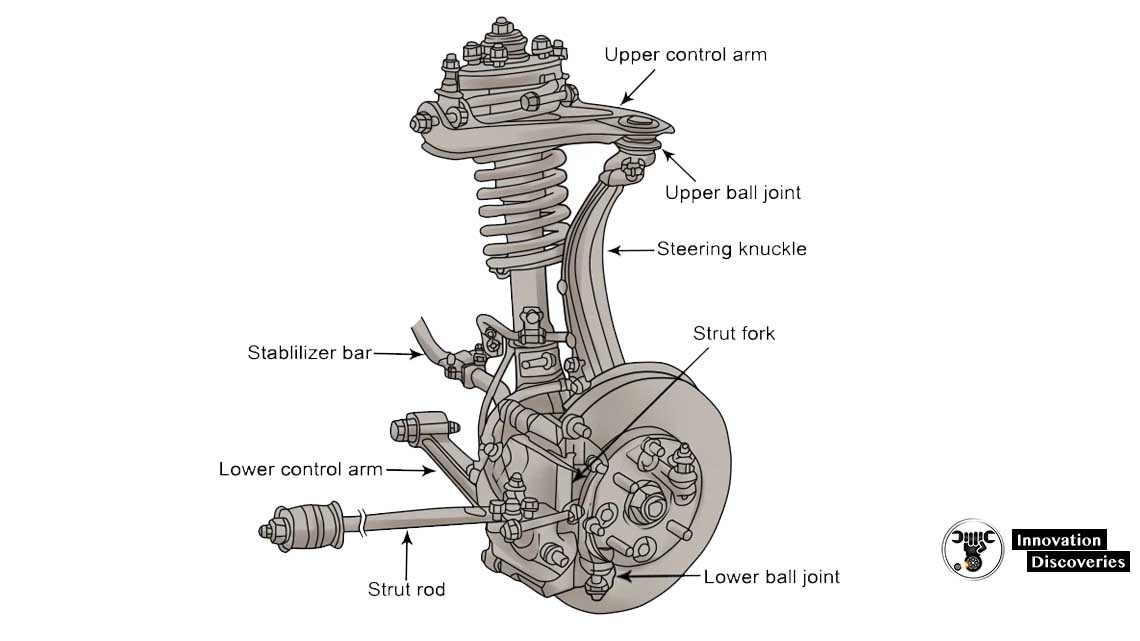
When should you have your vehicle’s suspension inspected?
There are many things to look for to determine if your vehicle’s suspension system needs to be inspected.
The first and most obvious sign is leaking shocks.
If your shocks are leaking, your shocks or struts (depending on what you have on your vehicle) must be replaced.
Read: ALL ABOUT TIRES, WHAT IS THE MEANING OF NUMBERS ON THE TYRE? WHAT IS INSIDE THE TYRE?
Another easy way to find out if your suspension system should be inspected is to determine if it is bouncing or swaying excessively.
To do this, you can drive down a familiar road and see if your vehicle bounces more than usual. You can also perform the bounce test.
The bounce test requires you to bounce each corner of your vehicle a few times, and after you let go, the vehicle should bounce only once and then settle.
If your vehicle settles after one bounce, then your shocks and shock absorbers are good.
If your vehicle continues to bounce, your shocks and shock absorbers may be worn and should be inspected. Bottoming out and nose-dives are also good signs of worn shocks and shock absorbers.
Several other signs will let you know your suspension system should be inspected.
These signs deal with mostly your sway bar.
- First, the easiest sign is when your vehicle sways too much when you are taking turns.
- Second, when you are passing an 18-wheeler or if one is passing you, your vehicle will sway from the 18-wheeler’s crosswinds.
- The third occurs when turning; when this occurs, your vehicle is difficult to steer, and you have to overcompensate for excessive swaying.
Any of these signs can mean that your sway bar is loose or damaged and must be inspected.
Your sway bar’s bolts that connect the sway bar to the vehicle should also be occasionally checked to determine their condition.
Even if you do not encounter any of these common issues, experts say that you should have your vehicle’s suspension system checked every year or every 12,000 miles.
Visit Forum
Visit Our Friendly Website


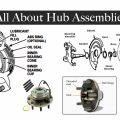
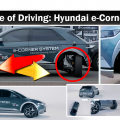
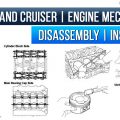
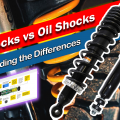
5 Comments